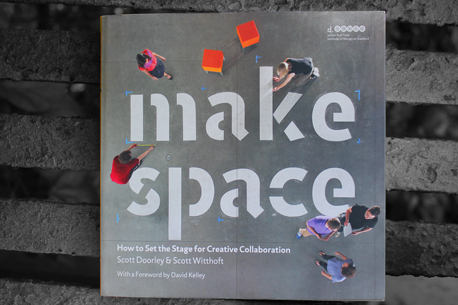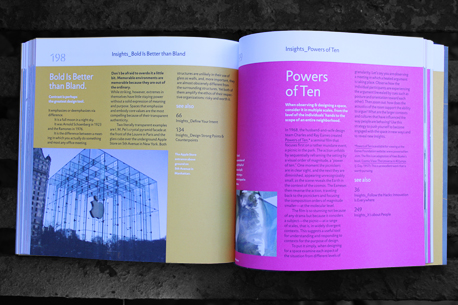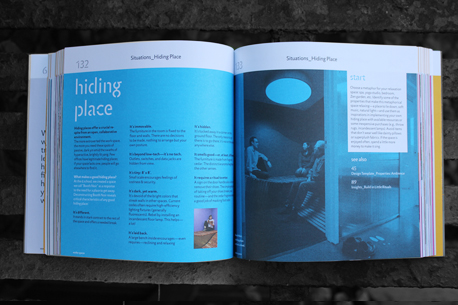Make Space, How to Set the Stage for Creative Collaboration

As a designer, I’m always thinking about how spaces function and how they affect the way we interact with each other. When I visit design studios, I curiously observe the space and I’m typically surprised by the lack of spatial design.
Work spaces are evolving as companies move toward more transparent, collaborative environments - thus the dynamics of space must be considered.
_Make Space, How to Set the Stage for Creative Collaboration _offers insights, tools, and templates to transform your own space into an environment that inspires.

“Conciously or not, we feel and internalize what the space tells us about how to work,” says David Kelley, creator of the collaborative spaces within IDEO.
Kelley believes that one of the first challenges is to equalize the respective status of people. You can find balance in space by giving everyone the same amount of space, or the freedom to customize an area to fit their work style. Leaders in organizations can avoid unequalized space in a meeting by having their team meet and sit in a circle on stools or even on the floor. When hierarchy is visible, it makes people reluctant to share ideas. “Reconfiguring the physical relationship is a powerful signal that participation is truly welcome,” Kelley explains.
Make Space is packed with insights and tools that anyone can implement in their own work environment. Written by Scott Doorley, Creative Director at the d.school, and Scott Witthoft, lecturer at Stanford University, many of the tools were designed and developed at the d.school:Insititute of Design at Stanford.
Insights, makes up the largest area of the book - offering kernels of discovery from the d.school’s own trial and errors. Many readers may already utilize some of these methods, but we often overlook how it impacts our work life. For example, understanding how music affects your collaborative environment. “During active work the music occupies just enough of our cognitive load to distract our inner critic,” the authors explain. Music helps to focus and puts you in the mood. Instead of each person in a studio listening to headphones, the space becomes open and collaborative if everyone can share that experience.

The biggest insight that often goes overlooked is creating non work spaces or hiding places. These areas can be the most productive spaces in creative environments. The authors suggest encouraging relaxation amid a stressful and strained work environment by providing spaces for quiet reflection and temporary escape. They suggest furnishing the space with pillows, subdued lighting, and comfortable seating. Research shows that insights, ideas, and epiphanies occur when the brain is most relaxed. And how many times have you been at work and just wanted to lay back and let your mind wander?
“Space matters. We read our physical environment like we read a human face.”
Make Space offers endless insights that will inspire you to transform your space, whether it’s at work or home. Ultimately, “Space matters. We read our physical environment like we read a human face,” says Kelley. Our space informs the way we work, how we interact with each other, and how we behave.
Make Space: How to Set the Stage for Creative Collaboration was published by John Wiley & Sons and released January 2012. You can support the Designer’s Review of Books by ordering from Amazon (US | CA | UK | DE ) or The Designer’s Review of Books Amazon Store.
About the Reviewer Christina Beard is a graphic designer, writer, and sailing enthusiast. She brings design thinking to a range of companies in NYC as a freelance designer. Follow her on Twitter.

